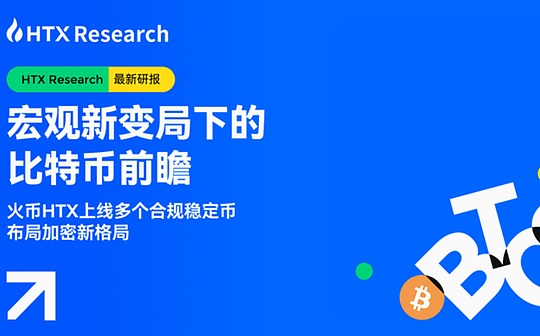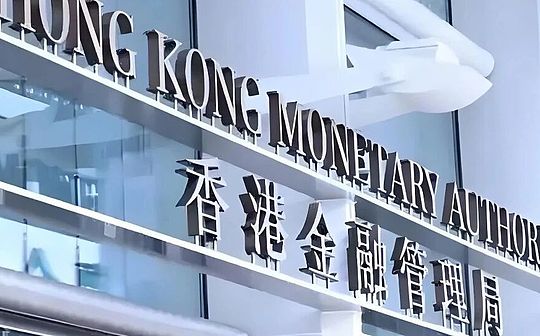
Recently, HTX Research, a research institution under Huobi HTX, released the latest research report “New Macro Changes and Bitcoin Outlook: Liquidity, Risk Preference, Policy Game and In-depth Perspective of Investment Strategy”, comprehensively analyzing the impact of the global macroeconomic environment on the Bitcoin market and providing investors with clear market outlook and investment guidance.
Bitcoin Market Outlook in the Macro Environment: Liquidity and Market Risk Preference Levels
The current global macro environment is complex and changeable. Factors such as the cooling of the Fed’s interest rate cut, the continued quantitative tightening (QT), the return of the TGA account of the US Treasury Department and the Bank of Japan’s interest rate hikes have led to a tight short-term liquidity.Federal Reserve Chairman Powell insisted on the “data first” stance. The strong U.S. job market (177,000 new non-agricultural market in April, with an unemployment rate of 4.2%) and potential inflation shocks of tariffs (CPI may return to more than 3% in the third quarter), which has reduced the expectation of interest rate cuts this year from three times to two times (September and December). Liquidity pressure has limited the upward space for risky assets such as Bitcoin.In addition, the Bank of Japan’s interest rate hikes and the closing of yen arbitrage trading positions further tightened global liquidity.In the short term (in the next 1-3 months), market liquidity expectations are tight, and the upward space of risky assets such as Bitcoin may be limited, but optimism at the risk preference level is expected to continue in the short term, beware of technical pullbacks and fluctuations caused by sudden news.
In the medium term (3-12 months), liquidity has gradually improved, market risk appetite faces great uncertainty, and opportunities and challenges in the Bitcoin market coexist.If the Fed initiates interest rate cuts and ends QT in the second half of 2025, coupled with the coordinated easing of global central banks’ policies, liquidity is expected to improve marginally, providing a rebound window for Bitcoin.The progress of negotiations after the 90-day buffer period of Sino-US tariffs, the ease of geopolitical situations such as Russia, Ukraine, India and Pakistan, and the continued entry of institutions (global listed companies hold more than 688,000 Bitcoins, accounting for 3.28% of the total supply), and the exploration of the “strategic Bitcoin reserve” policy at the federal and state levels may boost market risk appetite and support Bitcoin prices.However, if inflation exceeds expectations or geopolitical risks escalate, risk aversion may lead to pressure on the market.Investors need to pay close attention to Fed policies, macro data, tariff negotiations and regulatory trends, and flexibly adjust their strategies.
Positive signals of crypto-friendly policies are ushered in the policy game: may the regulation of stablecoin meets a period of easing?
Policy games are profoundly affecting the crypto market.On May 21, the Hong Kong Legislative Council passed the “Stablecoin Bill” to establish a licensing system for issuers of legislative currency stablecoin in Hong Kong and improve the regulatory framework for virtual asset activities.
And a more profound and complex policy impact occurs in the United States.The “Huge Beautiful Tax Law” program promoted by the Trump administration in the United States ($5 trillion in tax cuts in the next 10 years) stimulates market sentiment in the short term, but the expansion of fiscal deficits and debt ceiling issues may trigger liquidity fluctuations.At the regulatory level, the US Senate has reached a 90% consensus on the negotiations on the GENIUS Act stablecoin bill, and plans to pass a regulatory framework of 100% high-quality assets to provide standardized guidance for the stablecoin market.In addition, the exploration of tokenization of US stocks has accelerated, and the US Securities and Exchange Commission (SEC) and traditional financial institutions (such as JPMorgan Chase) are actively making arrangements, and it is expected that the scale of tokenization of real-world assets will reach US$18.9 trillion in 2030, expanding new scenarios for digital assets.The federal and state-level “strategic Bitcoin reserve” legislative attempts (such as the H.B. 302 Act of New Hampshire) further enhance Bitcoin’s strategic position and provide policy endorsement for institutional entry.
Follow the trend: Huobi HTX launches multiple compliant stablecoins such as USD1, and provides zero-fee redemption services
Under the trend of global policy easing expectations and regulatory transparency, stablecoins, as the liquidity basis and value anchor of the crypto market, are becoming increasingly important.Huobi HTX seizes market opportunities and recently launched a number of compliant stablecoins, including USD1 (World Liberty Financial USD), USDQ (Quantoz), EURQ (Quantoz), USDR (StablR), EURR (StablR), etc., to meet users’ diversified investment needs and improve capital efficiency.At the same time, to celebrate the launch of USD1 and lower the threshold for user participation, Huobi HTX specially launched a zero-fee redemption service. By 23:59 on December 31, 2025 (GMT+8), the USD1/USDT spot trading pair will enjoy a 0-fee discount.Users do not have to bear additional costs during the redemption process, and maximize capital utilization efficiency.Huobi HTX is committed to providing global users with safe, efficient and high-quality crypto financial services.
In addition, in terms of investment strategies, HTX Research’s research report analyzed multiple stablecoin wealth management products, including the annualized return of USD lending of Backpack, the annualized return of USD lending of Resolv can reach 15%, the annualized return of Aave+Pendle combination strategy is about 10%, Falcon’s USDf annualized return exceeds 10%, and Coinshift’s csUSDL annualized return of approximately 10%.
The research report finally pointed out that the Bitcoin market needs to be vigilant against liquidity pressure and volatility risks in the short term, and is expected to rebound in the medium and long term with clear policies and institutional entry.Huobi HTX will continue to keep up with market and policy trends, helping users seize opportunities and increase their value steadily in the complex and changing crypto market.
About HTX Research
HTX Research is an exclusive research department under HTX Group, responsible for in-depth analysis of a wide range of fields such as cryptocurrencies, blockchain technology, and emerging market trends, writing comprehensive reports, and providing professional evaluations.HTX Research is committed to providing data-based insights and strategic forward-looking, playing a key role in shaping industry perspectives and supporting smart decision-making in the digital asset space.With rigorous research methods and cutting-edge data analysis, HTX Research has always been at the forefront of innovation, leading the development of industry ideas, and promoting an in-depth understanding of changing market dynamics.







